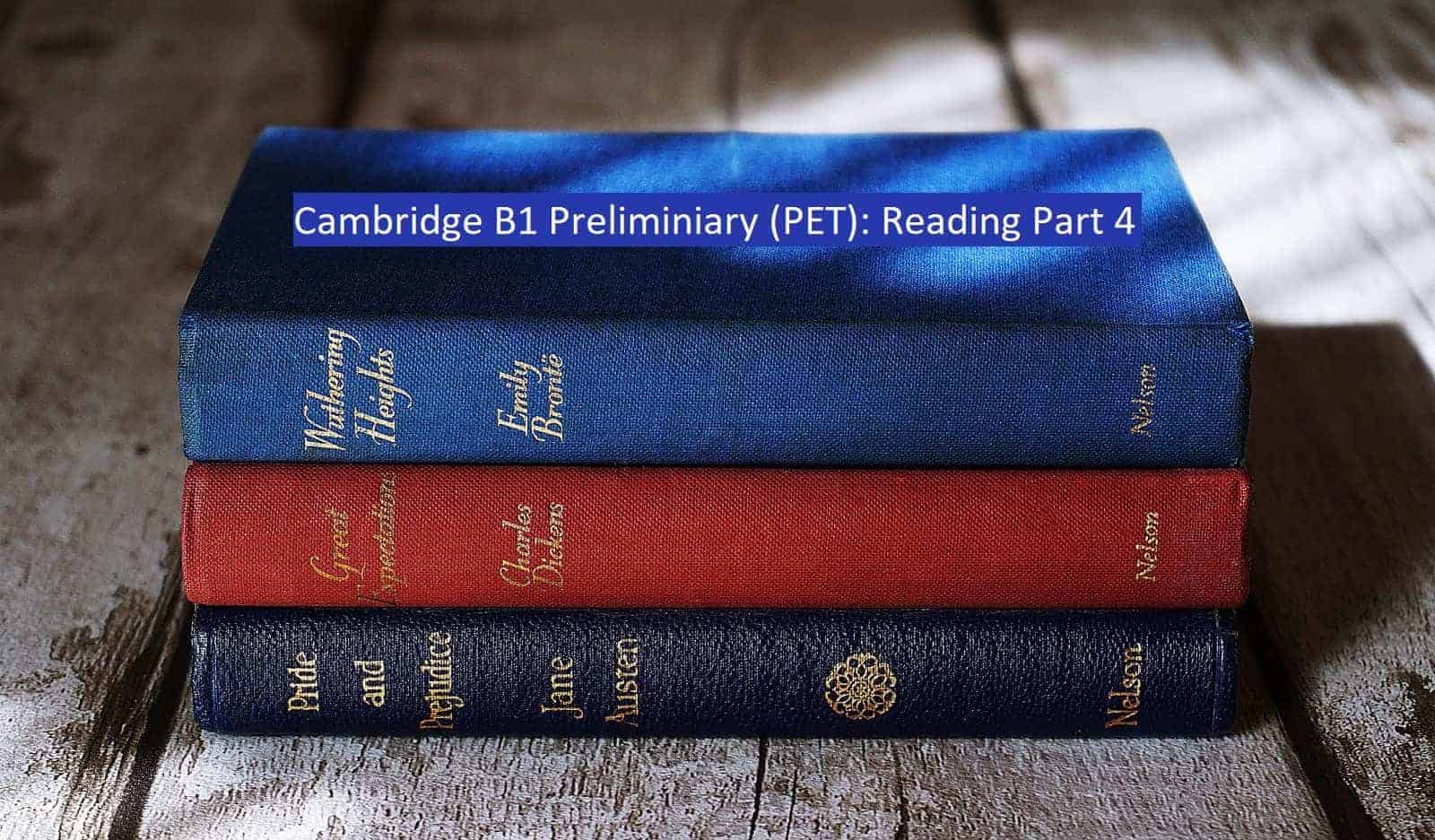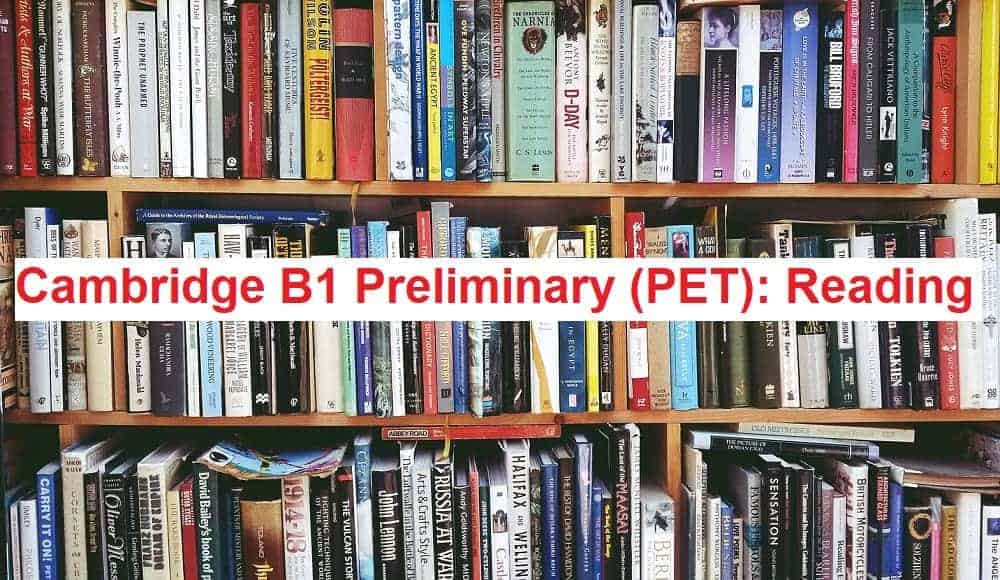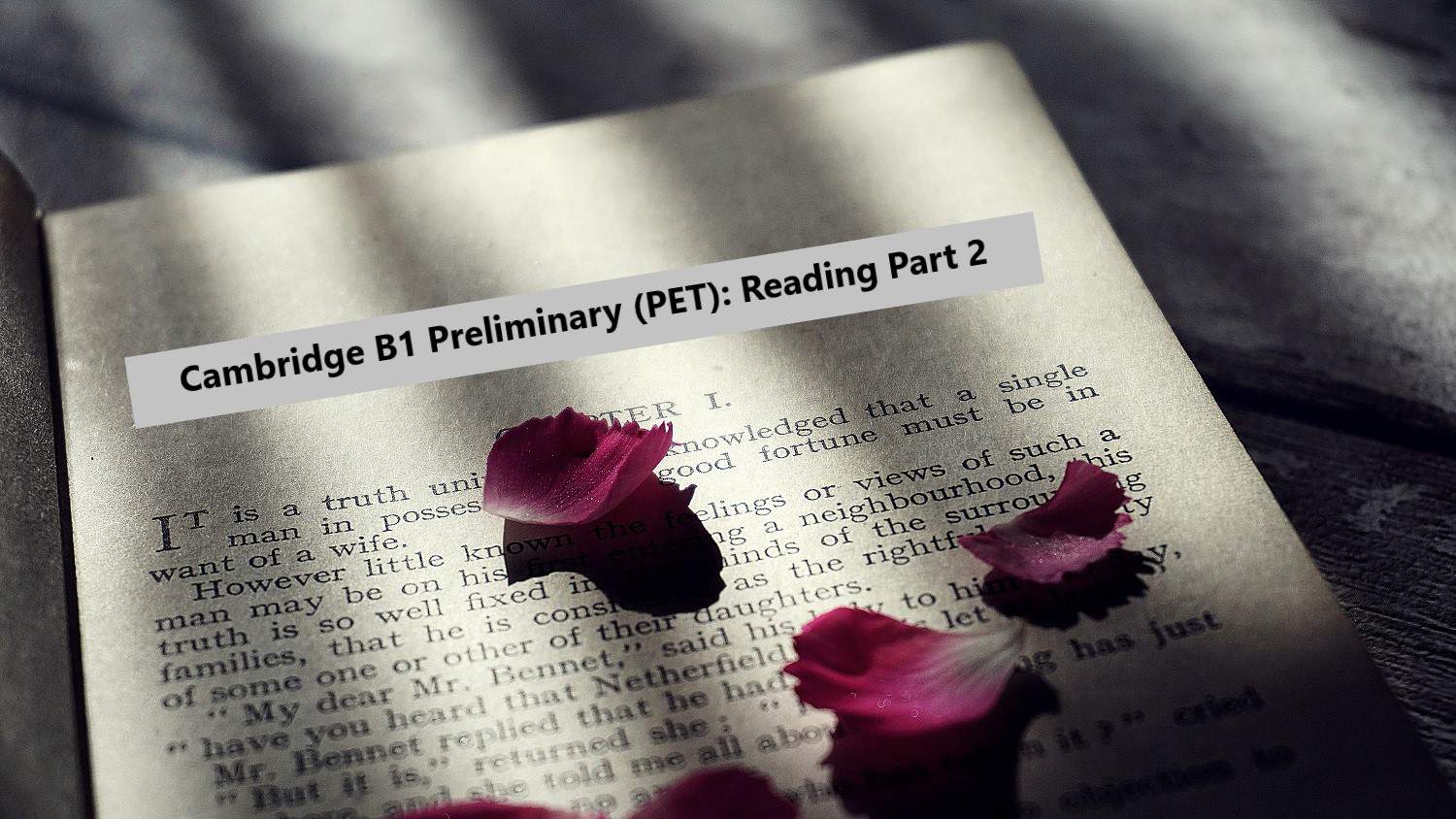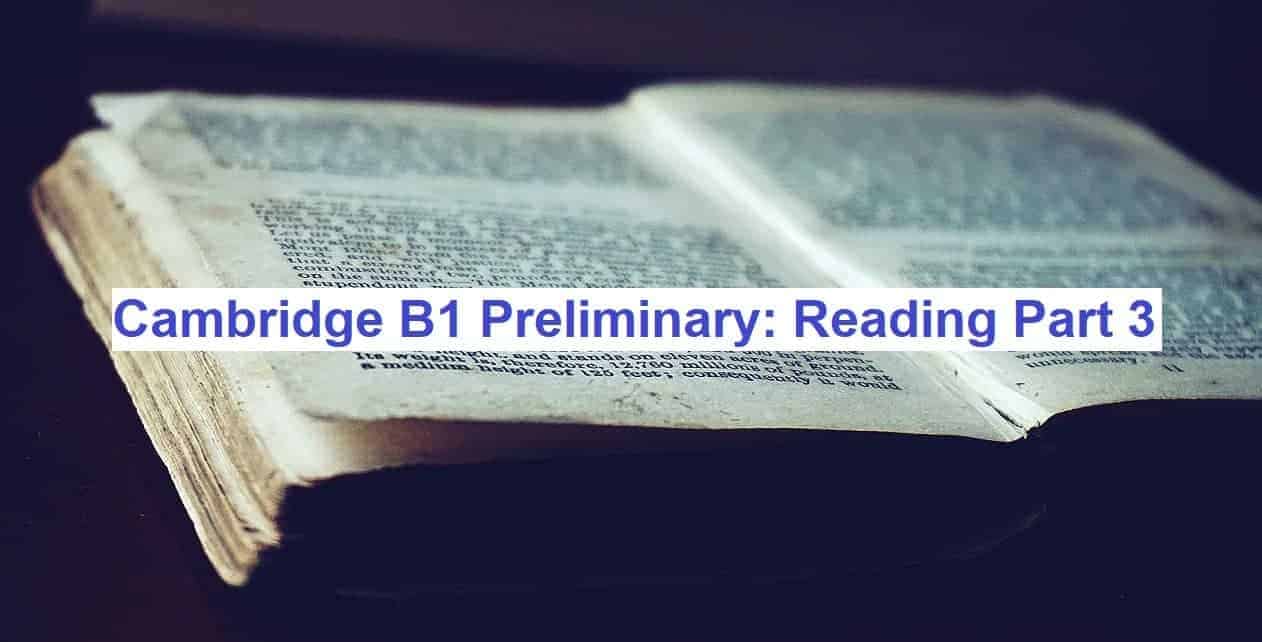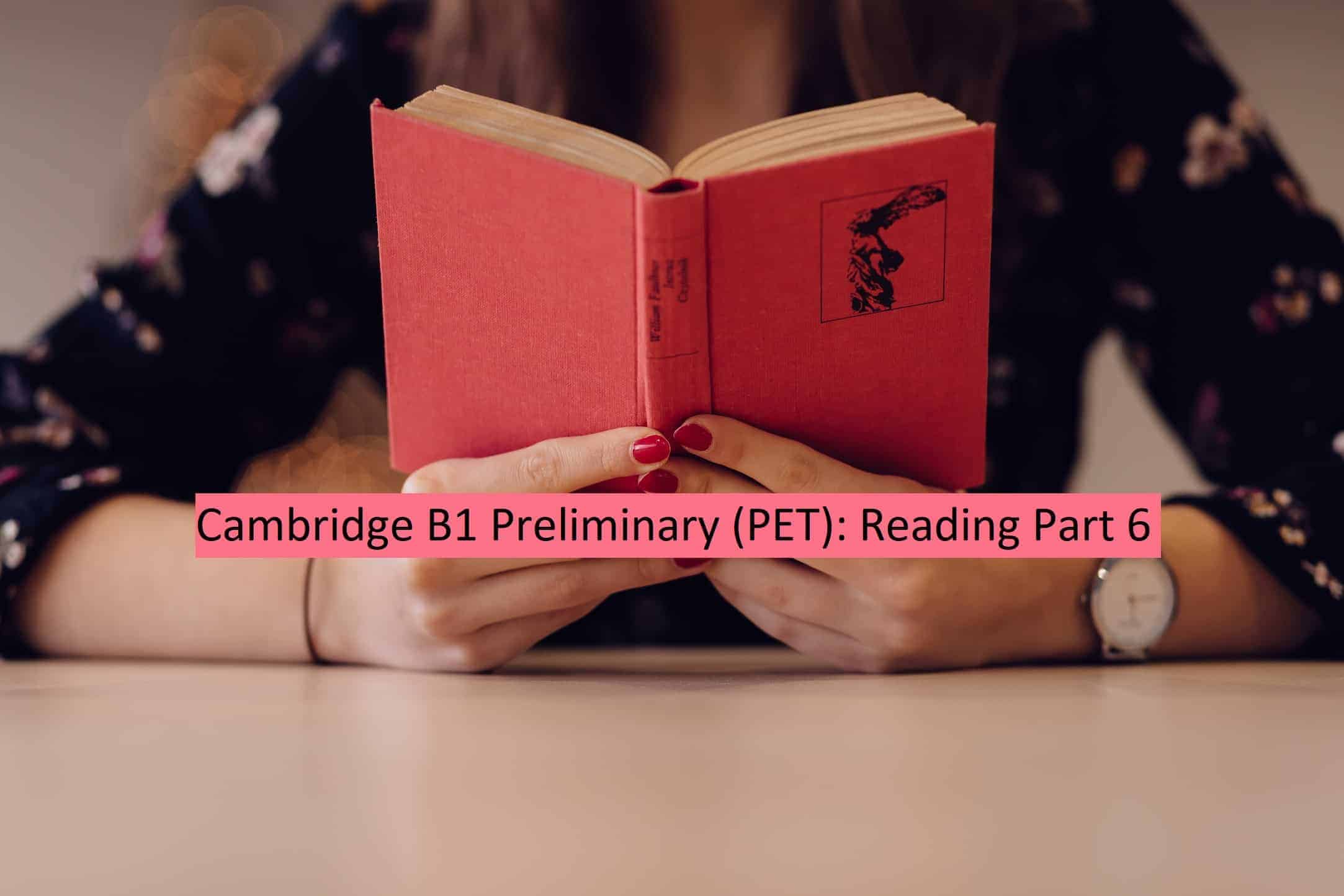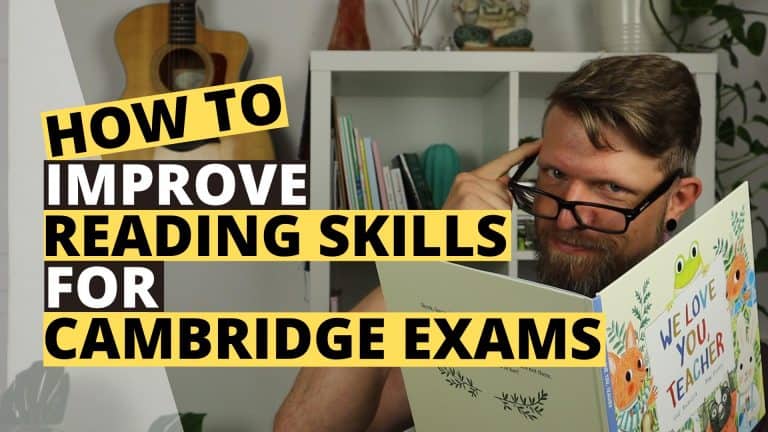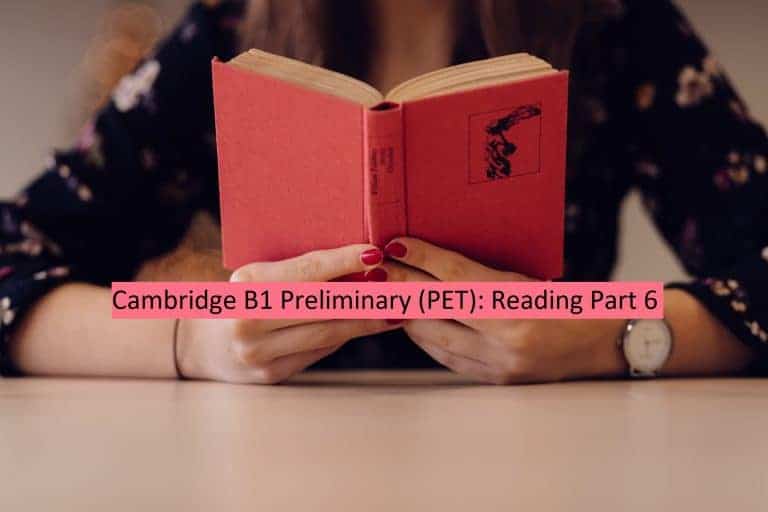Reading Part 4
In this article I’m going to talk about the specific features, problems and best strategies for Reading Part 4 of the Cambridge English B1 Preliminary test. After this you should be able to confidently pass this part of the exam and get the amazing marks that you deserve.
For more general information about the PET examination simply click through to my other post about everything you need to know about B1 Preliminary and learn more about how the whole thing works.
What do you have to do in Part 4?
Gapped text – Part 4 is one of the more difficult tasks in B1 Preliminary. From a text five sentences have been removed. You need to choose from eight possible options A-H to fill the gaps.
Part 4 tests your understanding of the flow of a text as well as the attitudes and opinions of the author. You also need to show that you understand how ideas are logically connected. This task is a true reading task unlike other parts of the exam which test your grammar and/or vocabulary (Parts 5 and 6).
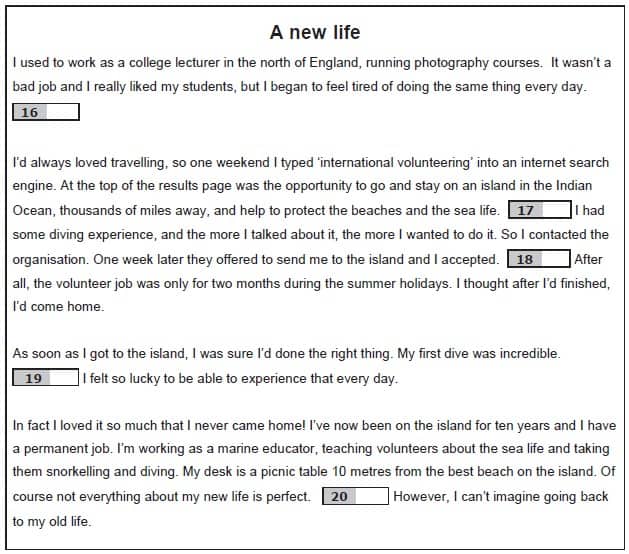
This is what a typical text in Part 4 looks like. You can see the five gaps where you have to put the missing sentences.
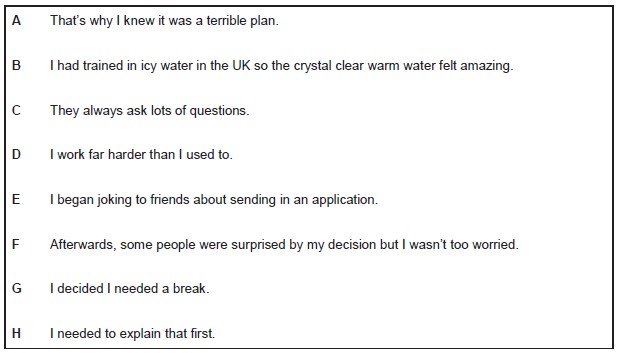
Even though there are only five gaps in the text, you get eight possible sentences to choose from.
Apart from picking the correct sentences you also have to transfer your answers onto a separate answer sheet which the examiner gives you at the beginning of the test.
As you probably know, there are six different parts in the Reading section of the B1 Preliminary exam. Each part has its own difficulties, but there are also a few general things that are interesting for you to know. You can find out more by checking out my article on the PET Reading paper.
What is difficult about Part 4?
In every part of the Reading paper you can find some problems that we often see being made by students. In this part of the article I’m going to show you what these difficulties are and then, in the following section, we’re going to see what you can do to avoid making the same mistakes.
Be careful with your timing
In the B1 Preliminary Reading paper there are six parts in total, but you only have 45 minutes to complete all of them. In some of these tasks, like in Part 4, you have to read pretty long texts and you also have to transfer all your answers onto a separate answer sheet. If we take away five minutes just to do that, we are left with 40 minutes for six tasks or just 6 1/2 minutes per task.
It is really important that you are comfortable with the timing for the different parts of the Reading paper. Be careful, check the clock and practise enough so you don’t waste too much time on a single task.
Don’t get distracted
OK, one of the biggest problems that a lot of students have is that they feel confused when they take the exam because of the time limit (read above) and because they are not sure about how exactly each task works and what you can do to get through the exam in a relaxed yet speedy way.
In many tasks you will find what we call ‘distractors’. These are pieces of information designed to confuse you. In Part 4, for example, we find five gaps in the text but eight sentences to choose from so three of those sentences are distractors.
It is very important for you to know what to do and how to deal with this kind of distraction and if you keep reading a little bit further below, I’m going to tell you how to do it.
Tips and strategies for Reading Part 4
In the previous part of this article I told you about two of the main problems that students experience when they are doing Reading Part 4. Now we’re going to look at the very best way to do it.
Follow a step-by-step process
This sounds obvious, but for a lot of people the exam is so difficult because they don’t have a plan for the different tasks and they get very nervous. As a result, they might spend too much time on one question and then run out of time for the rest of the test. If you prepare yourself with a good step-by-step strategy for every single part, you can make your life much easier and your chances of success increase.
In Reading Part 4, our process could look like this:
- Read the text quickly and summarise each paragraph.
- Analyse the sentences.
- Analyse the text and choose the correct sentence for each gap.
Let me show you with an example how this works.
Read the text quickly and summarise each paragraph
This first step is very much straightforward. Read the text as fast as you can so you get a general understanding. While you are reading just write a word or two on the side of each paragraph so you know the ‘topic’ of the different parts of the text.
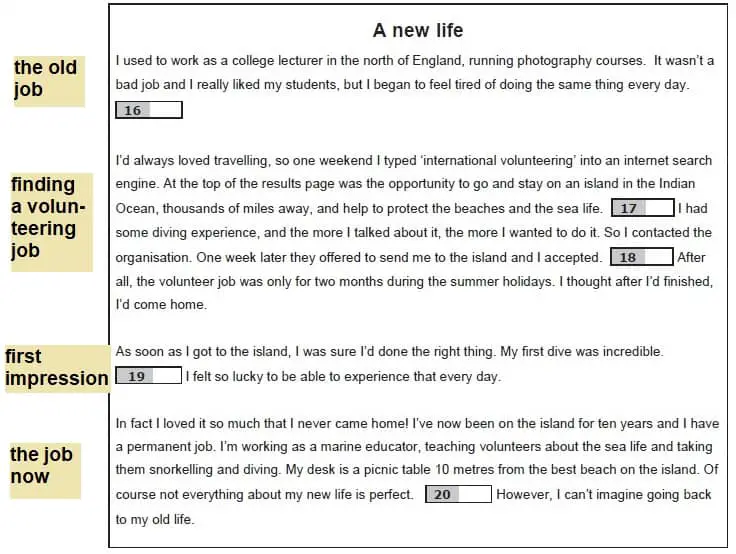
Doing this can help you a lot when you try to match the sentences to the gaps.
Analyse the sentences
Once you’ve read the text, it’s time to look the sentences that you have to put in the gaps.
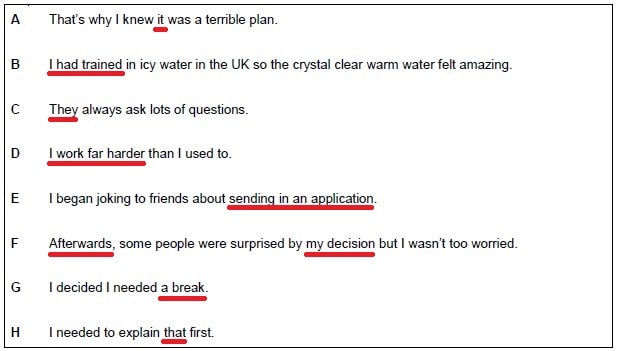
As you can see, I’ve already underlined the most important words, but the question for you is why they are important.
To make a connection between the text and the sentences you have to find words or expressions in those sentences that are not fully clear. For example, in sentence A, I underlined the word ‘it’ because without context we don’t know what ‘it’ refers to.
Underlining these words gives you something like a hook that you can use to connect the sentences to the text.
Analyse the text and choose the correct sentence for each gap
Now we are ready to put the sentences in the gaps. The next step is to look at the text again and work through it one gap at a time. Read very carefully what is around the gap and check if you can connect the text to one of the possible sentences.
In our example text this could look like this:

Right before the gap the writer explains that he/she was tired of his/her job as a college lecturer. When we now look at our sentence options there is one that perfectly fits the gap.

Sentence G talks about the fact that the writer needed a break. That connects beautifully to the text in which he/she talks about being tired. So, sentence G is our choice.
Follow this step-by-step process and repeat it for each gap and I promise Part 4 will become much easier for you. 🙂
General tips
There are a few things you can do to generally get ready for the Reading paper of the B1 Preliminary exam.
First of all, try to read things in English as often as possible. Even if you only have five or ten minutes every day on the bus to or from work or school, use it practise some reading. Read whatever you want: the news, stories, articles or anything else you enjoy.
You will become a faster reader, which can save you time in the test, and you will see a lot of grammatical structures and new vocabulary that you might see again when you take the exam.
Secondly, think about taking English classes to prepare yourself specifically for the exam. It can be very helpful to have a teacher who can give you feedback on your typical mistakes and things you already do well so you know what you have to improve what you should focus on when getting ready for PET. To find a good school near you have a look at my article about everything you need to know about B1 Preliminary.
Last but not least. think about your time management and the order in which you want to go through the different tasks in the exam. If you want to know more, you can follow the link to my post about the Reading paper in the PET test.
Lots of love,
Teacher Phill 🙂

